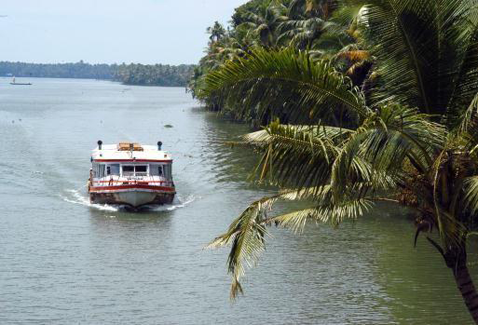
India is seeking to enhance the share of coastal shipping in the overall modal mix for transport to 10 per cent by FY2020. The target, though modest, will help achieve higher growth for the sector in the future.
At present, the country’s modal mix for transport is heavily skewed towards railways and roads. These two modes of transport account for 87 per cent of the total freight.
Coastal shipping in India continues to remain underdeveloped and lag far behind other modes of transport even though the country has over 14,500 km of navigable inland waterways and there are 13 major and 187 non-major ports along the coastline.
Currently, petroleum, oil and lubricants, and coal and iron ore are the main items transported through coastal shipping in India. These items account for 85 per cent of the country’s overall coastal movement.
The state of coastal shipping in India can be easily gauged from the fact that there are only around 125 cargo carrying vessels with average capacity of 3,000 DWT, 15 container ships with average size of 1,800 TEU and a few vessels ferrying passengers on select routes in such a vast and populated country.
There are several reasons why India has so far failed to realise the full potential of coastal shipping. Firstly, the current policies, regulations and tax regime are unsuitable for the sector. Secondly, the sector lacks a conducive ecosystem comprising ancillary industries such as shipbuilding, ship repairing and recycling and bunkering. Thirdly, inadequate draft as well as lack of infrastructure on shores and for intermodal connectivity stunts the growth of coastal shipping. Fourthly, heavy population density in landlocked regions leads to lopsided growth of road and rail transportation. Fifthly, the lack of investments has led to fragmentation in the industry with many small players. And lastly, the imbalance in cargo originating clusters in the country, because of which almost no return load is generated, adversely impacts shipping companies.
According to a study, the country’s coastal volume potential can be increased by around 20 million tpa across 9-10 cargo categories on select routes. The categories include cement, fertilisers, food grains, steel, marble, salt, sugar, cotton and automobiles. Other commodities such as soda ash, bentonite, electronics, FMCG and project cargo need to be evaluated in greater detail to ascertain the actual potential of coastal shipping.
In order to enhance the share of coastal shipping in the overall modal mix for transport to 10 per cent, India will need to increase cargo tonnage on coastal ships and inland waterways transport at a CAGR of 23 per cent from the current 172 million tpa to 600 million tpa in FY2020. Significant changes in product mix, vessel type mix and port wise traffic distribution will also have to be made in addition to increasing the coastal cargo carrying fleet to approximately 950 vessels with average capacity of 3,000 DWT.
The Ministry of Shipping has recently released a vision document with a view to promote coastal shipping in the country. The document suggests the following:
- Grant of infrastructure status to the shipping industry to enable access to long-term financing at reduced cost of borrowing
- Creation of a Coastal Shipping Development Fund to address financing requirements of the coastal shipping industry
- Simplification and rationalisation of procedures and regulations pertaining to customs, immigration and port health checks
- Coordination and cooperation between different ministries at the Centre and states
- Capacity expansion of port infrastructure through addition of cargo berths at existing facilities
- Identification of underutilised ports and berths for development as exclusive coastal cargo ports and berths
- Creation of necessary infrastructure for handling specialised vessels like RoRo/RoPAX, car carriers, project/ODC cargo and LNG/LPG carriers
- Connectivity improvement at and to coastal ports and berths
- Use of specialised vessels like RoRo/RoPAX to eliminate multiple handling
- Creation of logistical infrastructure such as warehouses, silos, tank farms, container fabrication facilities and container stations along coastal ports
- Promotion of containerisation of coastal cargo by reducing tariff and non-tariff barriers in import and fabrication of containers
- Facilitation of strong ties between coastal operations and trucking companies to ensure coastal shipping forms an integral part of the logistics chain
- Creation of a confederation of industry bodies comprising industry associations for coastal shipping, ship owners, shipbuilders and multimodal operators
- Development of coastal regions to improve cargo availability
- Integration of coastal shipping in manufacturing and industrial policies with special fiscal incentives
- Relaxation of cabotage for specialized vessels such as Ro-Ro/Ro-Pax/car carriers











